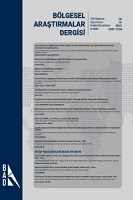GÜNEYDOĞU ASYA DİNLERİNİN BÂTINİ BOYUTLARININ İRAN ÖRNEĞİNDE İNCELENMESİ: TASAVVUF, MİSTİSİZM VE MEHDİLİK
An Examination of the Esoteric Dimensions of Southeast Asian Religions in the Case of Iran: Sufism, Mysticism and Mahdism
Author(s): Cenk TamerSubject(s): Middle-East Philosophy, Culture and social structure , Sociology of Culture, History of Islam, Contemporary Islamic Thought, Sociology of Religion
Published by: Mehmet Seyfettin Erol
Keywords: Southeast Asia; Esoterism; Iran; Mysticism; Mahdism;
Summary/Abstract: When we examine the Southeast Asian societies, it can be clearly seen that the customs, traditions, rituals, mystical beliefs and sufism that they inherited from history have strong effects on their beliefs. For this reason, it is not possible to sort out a unique understanding of Islam in the region. Traditional beliefs and shamanist beliefs in the Indo-Malay geography combined with the widespread Sufi-lore culture under Arab-Persian influence, resulting in a heterodox understanding of Islam with a strong esoteric aspect. This cultural belief has established a close relationship with Shiism, which is shown as the heterodox sect of Islam. The Islamic Republic of Iran, on the other hand, tries to use the esoteric dimensions of Southeast Asian religions for its own interests (Shiite-Mahdi politics).
Journal: Bölgesel Araştırmalar Dergisi
- Issue Year: 6/2022
- Issue No: 2
- Page Range: 575-611
- Page Count: 37
- Language: Turkish

